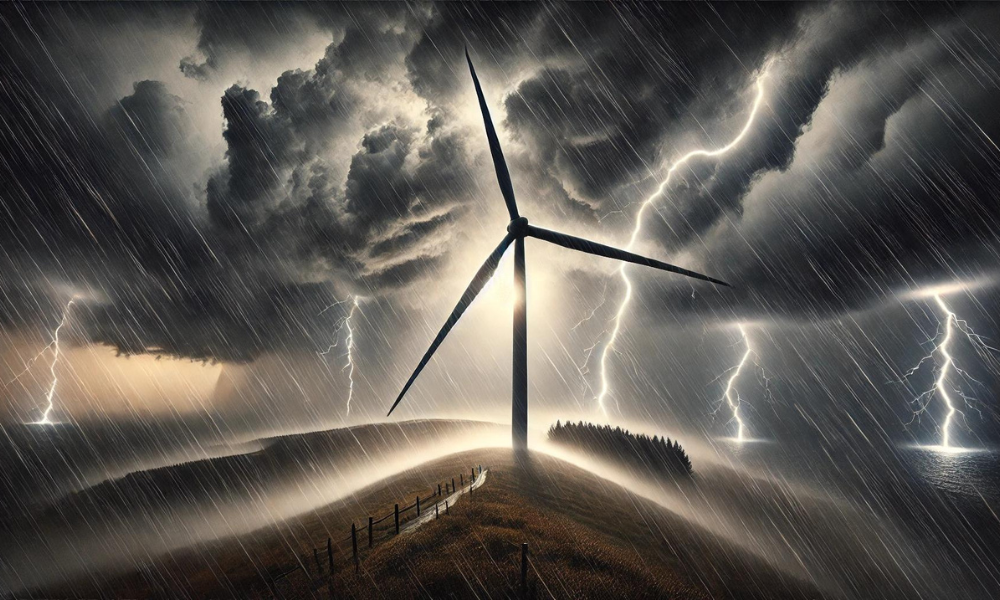Climate change to impact wind power production – Swiss Re

Climate change to impact wind power production – Swiss Re | Insurance Business New Zealand
Reinsurance
Climate change to impact wind power production – Swiss Re
Renewable energy’s capacity expected to double by 2030 – but it could be in jeopardy
Reinsurance
By
Kenneth Araullo
Swiss Re reports that climate change is projected to alter global wind patterns, potentially reducing average wind speeds in some regions. This change could affect the productivity of wind farms.
Additionally, storm intensity is expected to increase, with stronger gusts and more frequent lightning strikes posing risks to wind turbine infrastructure. Producers and their insurers will need to monitor these trends closely.
As per the reinsurer, there is currently approximately 1 terawatt of installed wind power worldwide, equivalent to the annual electricity consumption of the Netherlands. This capacity is expected to double by 2030, although it will still fall short of net-zero targets.
Wind is already a significant part of the electricity mix in many countries. For example, the UK recorded a 29% electricity share from wind power in 2023, while the EU’s share was 18% during the same period.
Climate change is expected to impact wind power through changing wind patterns, increased storm intensity, higher likelihood of lightning strikes, and heatwaves that could lower the lifespan of equipment and increase turbine downtime. Swiss Re emphasizes that these factors must be considered in future planning.
The impact of wind droughts
In the second half of 2021, Northwestern Europe experienced a “wind drought,” with wind speeds falling 15% below average. This reduction is largely linked to Arctic warming, which narrows the temperature differential between the tropics and the poles, thus reducing Northern Hemisphere wind speeds. Similar conditions were observed in the winter of 2022, with wind speeds plummeting over several days.
Swiss Re notes that wind droughts have significant consequences. For instance, in September 2021, the UK’s wind contribution to electricity fell to just 2%, leading to the reactivation of two coal plants. In December 2022, the wholesale cost of UK spot electricity hit a record high, driven by a decline in wind power and rising natural gas prices.
The relationship between wind speed and electricity production is non-linear. A 10% decline in wind speed can lead to more than a 30% reduction in output. Wind turbines require a minimum wind threshold to operate, and productivity depends on wind magnitude, direction, pattern, and duration. The Intergovernmental Panel on Climate Change (IPCC) projects that climate change will reduce average annual wind speeds by 10% by 2100, with significant regional variability.
Stirring up a storm
Wind turbines are typically designed to withstand winds of up to 112 mph, equivalent to a category 3 hurricane. Speeds above this can damage rotors and potentially topple turbines. Extreme wind speeds also reduce productivity, as turbines shut down beyond certain thresholds to avoid damage.
Swiss Re reports that tropical cyclones and severe storms impact power generation by shutting turbines at high speeds and causing infrastructure damage. While wind farms have generally proven robust against storms, significant damage has occurred.
For instance, Typhoons Jebi and Cimarron in 2018 caused several turbines to topple in Japan, and recent storms in Scotland and Iowa led to rotor detachments and turbine collapses.
Observations indicate a decrease or no change in the frequency of tropical cyclones globally, but the proportion of intense tropical cyclones (Category 3-5) has increased. This trend is expected to continue, with cyclones projected to shift northwest and north, affecting regions such as eastern China, Japan, and Korea.
Damages from intense storms will be compounded by rising sea levels, inland flooding, and changing wave patterns.
The effects of lighting and extreme heat
Approximately 5.4% of turbine blades are struck by lightning annually, with significant regional variation. Despite protection systems, lightning strikes account for 60% of operational blade losses and 20% of operational wind losses.
Swiss Re notes that climate change is expected to increase lightning frequency by 12% for every 1°C rise in temperature, potentially leading to a 50% increase in lightning strikes in the US by 2100.
Extreme heat events are also becoming more frequent, with significant impacts on wind power. Temperatures of 35-45°C can reduce the lifespan of battery cells and other equipment, and turbines are often designed to shut down beyond 45°C to prevent damage. This can result in lower outputs from wind farms.
Risk management for wind power producers
Swiss Re advises that planning for expected electricity output must account for projected changes in wind speeds, with businesses needing to include a range of wind projections in their investment planning. Risk prevention measures should acknowledge growing climate risks, including the need for turbines with greater resilience to wind gusts and lightning strikes, as well as improved heat resistance.
Offshore turbine failures are significantly more costly than onshore failures. Offshore turbines are generally larger and experience higher wind speeds, but post-incident downtimes are longer and power losses greater. Replacing an offshore turbine can cost 5-10 times more than replacing an onshore turbine.
The reinsurer also emphasized that wind investments will inevitably become riskier as easier sites are developed first, leaving riskier ones for later. This risk will be exacerbated by climate change, particularly in regions like Texas, which has significant potential for wind power but also faces large storm exposure and a projected increase in the number of days with temperatures over 45°C.
What are your thoughts on this story? Please feel free to share your comments below.
Keep up with the latest news and events
Join our mailing list, it’s free!






